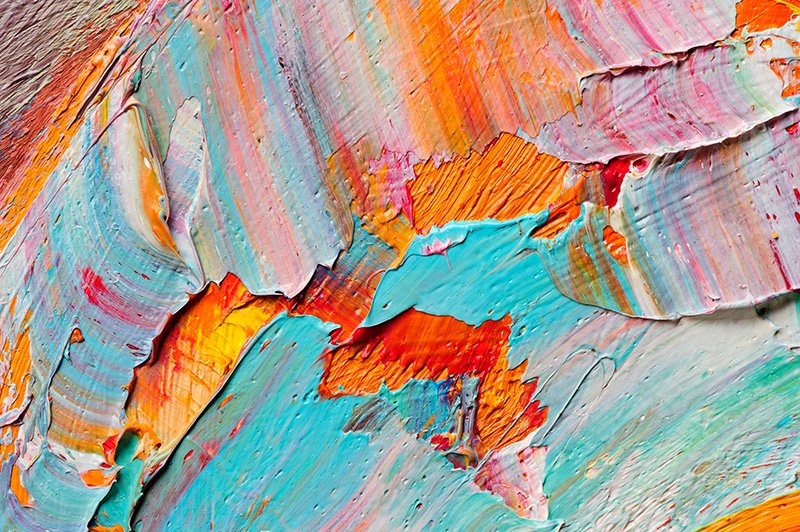Close-up complications
Every photographic genre presents problems that need to be overcome, be it achieving sufficient depth of field in a sweeping landscape view to freezing the ‘decisive moment’ in a street shot. But among the many and varied photographic avenues you can explore, macro photography is arguably one of the most challenging. As you move from regular subjects to close-up and macro ones you will encounter numerous technical issues. These are largely caused by two factors that are part-and-parcel of close-up and macro work:
The close working distance between your camera and your subject.
The heavy magnification of your subject.
So let’s look at the primary challenges we face, and the ways in which we can try and deal with them.
Post author: Chris Gatcum
FREE ONLINE BEGINNER’S PHOTOGRAPHY COURSE
A Year With My Camera is free by email and will get you off auto mode in less than 6 weeks. Join here and get started today:
Depth of field
With any photograph you take, the closer you are to your subject – and the closer you focus – the less depth of field you will have at any given aperture. This is compounded when you are shooting macro, and even if you use the smallest aperture setting on your lens (f/22 or f/32, for example) you may find that depth of field is measured in millimetres, or less. Focusing accurately and holding the camera rock steady are therefore imperative, as not only could the tiniest shift in the distance between the camera and your subject be enough to throw it out of focus, but any slight camera movement will be magnified, potentially leading to image-ruining blur. As outlined in the first post in this mini-series, a sturdy tripod and macro focusing rail can be hugely beneficial here.
It’s also essential that your subject remains in the same position relative to the camera, for the exact same reason – any change could lead to a loss of focus. This won’t be a problem with a truly static subject photographed indoors, but if you’re photographing a flower outdoors, for example, you need to think about how you can hold it in place. Insects are more challenging still, but we’ll look at some subject-specific solutions in the next instalment of this mini-series.
When you’re focusing really close to the camera, depth of field can be measured in fractions of a millimetre.
Of course, even if you lock down your camera and subject, depth of field will still be extremely limited. The first thing you can do to combat this is consider how you position and frame your subject. If you set up your camera so your subject runs as parallel to the sensor as possible (i.e. your subject is as ‘straight on’ as possible) this will mean that the depth of field available to you is being maximised. So, for example, instead of photographing a dragonfly from the front or the side, where you’ll likely find it impossible to get the eyes and both wing tips in focus at the same time, consider a top-down shot from above that puts the wings and eyes on a similar plane to the sensor.
Flat subjects are ideal for macro work as they require minimal depth of field. However, care still needs to be taken to keep the camera parallel to the subject to ensure edge-to-edge sharpness.
Although it might be tempting to stop down the aperture to its smallest setting to give you the largest depth of field, this is rarely the best approach for close-up and macro work. Not only will it mean using a slower shutter speed or ramping up the ISO – which risks introducing blur through camera or subject movement, or overly noisy images – but it also leads to diffraction, which will soften your images. The smaller the aperture, the worse the diffraction becomes.
As an alternative to using a small aperture you could try ‘focus stacking’ your images, which involves making multiple exposures at slightly different focus distances and combining them during post processing to create a single image with an apparently greater depth of field. As this suggests, focus stacking is best suited to static subjects; we’ll explore this technique in full in a future post.
A third option is to simply accept the shallow depth of field you get with macro photography, and exploit its creative potential. You might even set a wide aperture to deliberately restrict the sharp areas in your images, perhaps shooting through something in the foreground to add a hazy glow to your photographs – a popular technique among flower photographers.
Sometimes, an ultra-shallow depth of field can be exploited creatively – you don’t always need (or want) everything to appear sharp.
Light loss
As well as impacting focus and depth of field, macro photography causes problems with exposure. This is particularly apparent if you use extension tubes or bellows, as moving the lens away from the camera reduces the amount of light passing through to the sensor; the longer the tube(s) or bellows extension, the greater this light loss will be.
A similar issue can also occur with dedicated macro lenses. This is because the majority of lenses physically extend as they focus more closely and – just like using extension tubes or bellows – this extension reduces the amount of light passing through the lens. IF (internal focus) macro lenses suffer less from this, as they focus internally, but lenses that have a long helical focusing thread (non-IF lenses) can lose a stop or more of light as they extend to their closest focus distance.
The only way to counter this loss of light is to increase your exposure. If you are using electronic tubes / bellows (or a dedicated macro lens) your camera’s automatic and semi-automatic shooting modes will take this light loss into account, but with non-electronic tubes / bellows you will most likely need to shoot in Manual mode and adjust your exposures accordingly. In either case, setting a wider aperture is usually not the best approach (unless you are deliberately trying to minimise the depth of field), so it will come down to making changes to the shutter speed or ISO. With static subjects, adjusting the shutter speed will allow you to maintain a low ISO (and optimum image quality), but for creepy crawlies and other moving subjects you might be better off increasing the ISO to maintain a motion-freezing shutter speed. In either case, be prepared to make compromises.
A lot of light will be lost when you use macro bellows with a long extension (or stack multiple extension tubes or use some macro lenses). When this happens you need to decide your priority in terms of aperture, shutter speed and ISO, and set your exposures accordingly.
Focusing
As noted above, the shallow depth of field you get with macro photography makes accurate focusing both more critical and harder to achieve. Even if your macro lens, extension tubes / bellows or supplementary close-up lens(es) mean you can still use your camera’s autofocus, this is not necessarily the best option. The problem is, the margin for focusing error is so small that focusing just a fraction of a millimetre in front of or behind your intended target can be the difference between an insect’s eye appearing perfectly sharp or overly blurry, for example.
Your camera’s AF performance will also be hampered by any light loss caused by using long extension tubes / bellows or an extended macro lens, and there’s also a very strong possibility that your close proximity will physically shade your subject, reducing the amount of light falling on it and reflecting back to your camera. As an autofocus system needs light (and contrast) to function at its best, the upshot is that you may quickly find your camera struggling to focus if it’s left to its own devices.
One solution here is to use a separate lamp. A small LED torch shone on your subject is often all you need to give your camera’s AF a much-needed helping hand (you could even use it to light your subject as well). However, this still doesn’t guarantee that your camera will focus at the exact distance you need it to, which is why many macro photographers switch to manual focus, using the focus ring on the lens to get the focus roughly set and then fine tuning it using a geared macro focusing rail. You may still find that a torch is needed to help you see what you’re doing, but the result of this set-up is focusing accuracy at a sub-millimetre level.
Some subjects allow you to pre-focus. For example, if you notice that bees and other insects are drawn to a particular flower, you can frame and focus your shot, and wait for a suitable subject to arrive, rather than trying to hastily focus on your subject when it lands.
Macro flash
As with any branch of photography, if you need to throw some light on your close-up subjects, flash (and, increasingly, continuous LED lighting) is always an option. However, your camera’s built-in flash won’t help you here, as its position means it will almost certainly throw a shadow of your lens over your subject. The same is also likely to happen if you use a hotshoe-mounted flash, so at the very least you will need to take your flash off-camera. If you’re photographing insects or other potentially moving subjects then a flash that offers TTL control can be very useful, as any light loss should be taken automatically into account by the flash, but with static subjects it’s also possible to work manually and determine your exposure with a bit of trial and error.
Be warned, though: using a single flash (or continuous light source) can easily result in hard shadows being thrown across your subject, and these shadows often become exaggerated and more obvious in a close-up shot. For this reason, a lot of macro photographers use a slightly more specialist lighting equipment, such as a ring light or a twin flash/macro flash setup.
Ring flash
As its name suggests, this ring-shaped flash fits around the front of your lens, providing you with a very even light source. This can work well when you want nice, soft lighting, as a ring light eliminates most shadows, but for some subjects it can be a bit too flat. Continuous LED ring lights are a popular alternative to a ring flash, as they tend to be far less expensive and let you see what effect they are having before you shoot.
Twin flash
A twin flash (or macro flash) set-up consists of two small flash units that are usually mounted either side of the front of the lens. This is a very popular arrangement for insect photography, as the angle and power of each flash can be set independently, allowing you to avoid both the flat lighting created by a ring light and the hard shadows cast by a single light. This versatility does come at a price, though – macro flash kits tend to be quite expensive.
WHAT IS A YEAR WITH MY CAMERA?
Emma Davies wrote A Year With My Camera to help you be completely confident with your camera controls so you can start enjoying your photography and having fun once again. It’s available free by email (join below) or in an app (search on your app store) or in bestselling printed workbooks available on your local Amazon store.








